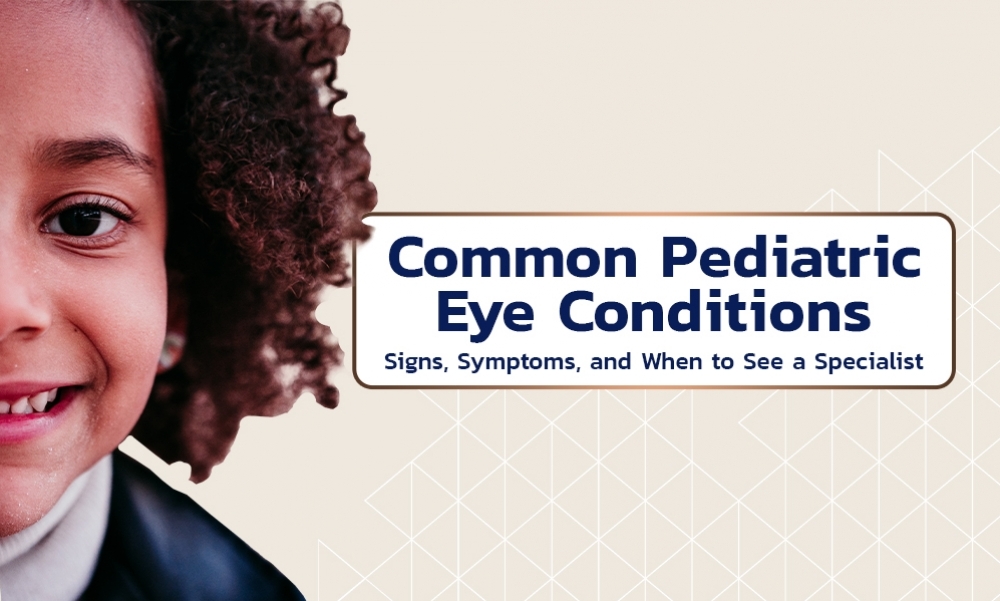Vision is fundamental to a child's learning, growth, and interaction with the world around them. Yet, many pediatric eye conditions can develop quietly, impacting everything from school performance to physical coordination without obvious signs.
This is why early detection through a comprehensive early eye exam for kids is so vital. Identifying potential pediatric eye problems early allows for timely intervention, which can significantly improve outcomes and prevent long-term vision issues.
At Rutnin Eye Hospital, our specialized pediatric eye clinic is dedicated to safeguarding your child's sight from infancy, through adolescence. Our expert team focuses on early diagnosis and effective treatment to support healthy pediatric vision.
Common Pediatric Eye Conditions
Refractive Errors
These are the most common vision problems in children, affecting how clearly they see based on how light focuses in the eye.
- Near-sightedness (Myopia): Distant objects appear blurred.
- Farsightedness (Hyperopia): Near objects may be hard to see clearly, however, children can often compensate.
- Astigmatism: Causes blurred vision at all distances due to an unevenly shaped cornea.
Eye Alignment Issues (Strabismus & Amblyopia)
- Strabismus: Also known as crossed eyes, this is when the eyes don't align properly, appearing to look in different directions.
- Amblyopia: Often called "lazy eye," this occurs when the brain favors one eye over the other, leading to reduced vision in the weaker eye. Amblyopia frequently results from strabismus or a large difference in refractive error between the eyes. Because the visual system is still developing, amblyopia must be treated early—ideally before ages 7–10—to prevent permanent vision loss.
Pediatric Cataracts and Congenital Conditions
While less common than in adults, cataracts (clouding of the eye's lens) can occur in children, sometimes present from birth (congenital). Other congenital eye disorders involve structural issues with the eye. Prompt evaluation by an experienced pediatric ophthalmologist is essential as these conditions can significantly interfere with normal visual development.
Signs Your Child May Need an Eye Exam
Routine school screenings or pediatrician checks are helpful; however, they do not replace a thorough eye examination by a child eye specialist. Consult a children’s eye doctor if you notice any of the following signs:
- Eyes that do not track together or appear misaligned (after the first few months of infancy).
- Frequent squinting or tilting of the head.
- Excessive eye rubbing.
- Unusual sensitivity to light.
- Persistent redness or tearing of the eyes.
- Difficulty reading or problems with schoolwork that suggest vision issues.
- A white or grayish spot in the pupil.
- Complaints of blurred or double vision.
Our ophthalmologists recommend that children with a family history of significant eye disease, premature birth, or developmental delays may also require earlier and more frequent eye check-ups.
Why Early Eye Exams Are Crucial & How to Get Started
Ensuring healthy pediatric vision through a comprehensive pediatric eye exam is vital for your child's future. Don't wait for obvious symptoms. A professional eye exam can detect subtle problems early when they are most treatable.
The expert team at Rutnin Eye Hospital’s pediatric eye clinic offers comprehensive, compassionate pediatric eye care. We are equipped with advanced technology to accurately diagnose and treat a wide range of pediatric eye conditions, serving families in Bangkok and beyond.
Take the proactive step to protect your child's sight. Make an appointment and schedule your pediatric eye exam today with a trusted pediatric eye specialist in Bangkok.
 02-056-3333
02-056-3333





